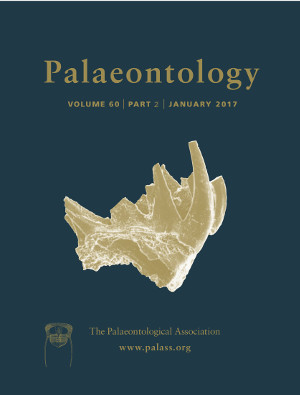Reg. Charity No. 1168330

Pengia Geyer & Corbacho is a Cambrian burlingiid trilobite with fused trunk segments devoid of any articulation in the anamorphic and epimorphic phases of development. The type species is Pengia fusilis (Peng et al.) from the Wanshania wanshanensis Zone of China. Here we describe a second species, Pengia palsgaardia sp. nov., from the Lejopyge laevigata Zone of the Paradoxides forchhammeri Superzone. It comes from a glacial erratic in Denmark which probably originated in the Alum Shale Formation of Västergötland, Sweden. Pengia palsgaardia is a large burlingiid (~10 mm in length), with 14 fused segments in the trunk whose boundaries are marked by ridges. The axis is narrow, with the axial furrows faintly indicated or effaced across the median. Laterally along the axis and the tapering glabella, symmetrical globular lobes are developed that are pinched at their base. During ontogeny the glabellar furrows are pit‐like adaxially but shallow towards the axial furrow as the globular lobes develop. Their pit‐like appearance in Pengia palsgaardia and some other burlingiid species is not considered similar to the condition seen in oryctocephalid trilobites. A median preglabellar ridge resembling that of Schmalenseeia Moberg develops late in ontogeny but in early ontogeny the preglabellar field resembles that of Burlingia Walcott, Alumenella Geyer & Corbacho and Niordilobites Geyer & Corbacho. This gives Pengia a more basal position in the schmalenseeid lineage, outside the derived Schmalenseeia. In mature specimens the facial sutures in P. palsgaardia are fused, but an ocular suture may have been present. During ontogeny Pengia would have gone through the anamorphic and protomeric protaspid segmental conditions, but articulation between either the cephalon and pygidium, or pygidium and thoracic segments of the trunk never developed so it did not progress beyond the protaspid phase. This extreme protomeric development is considered to be a derived feature in Pengia.